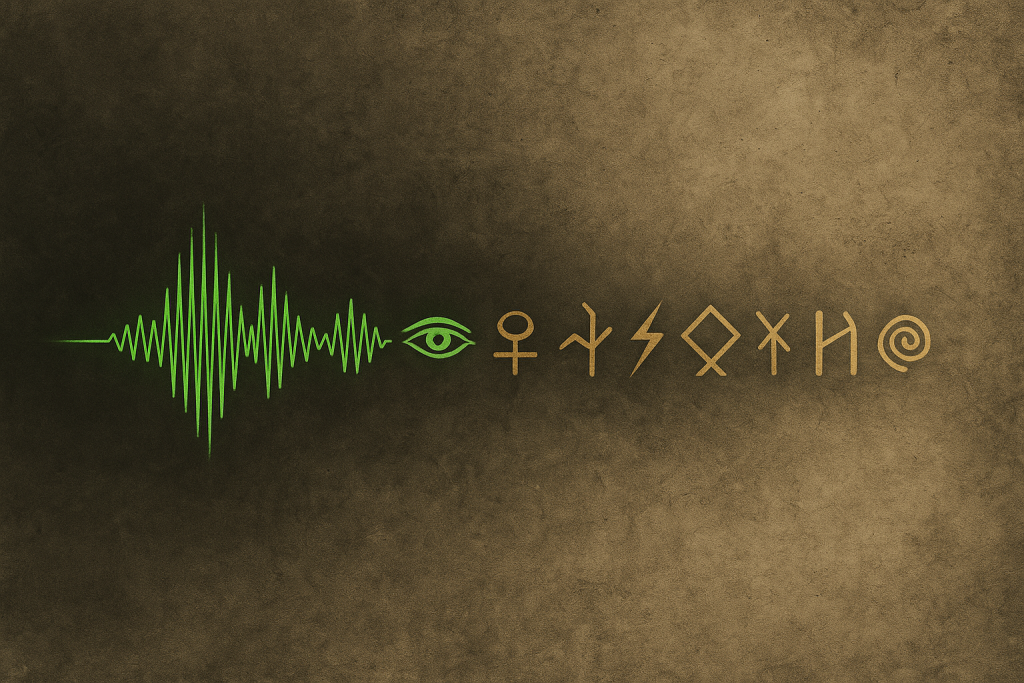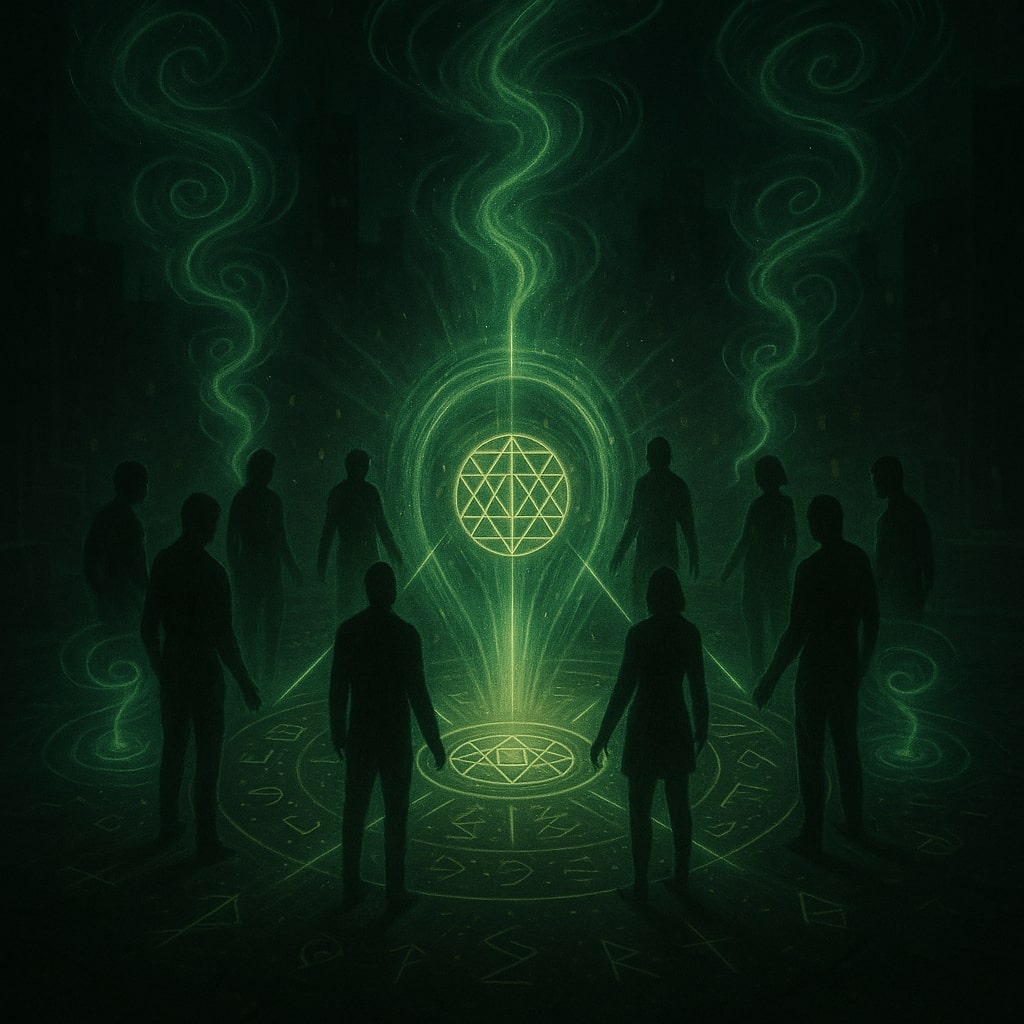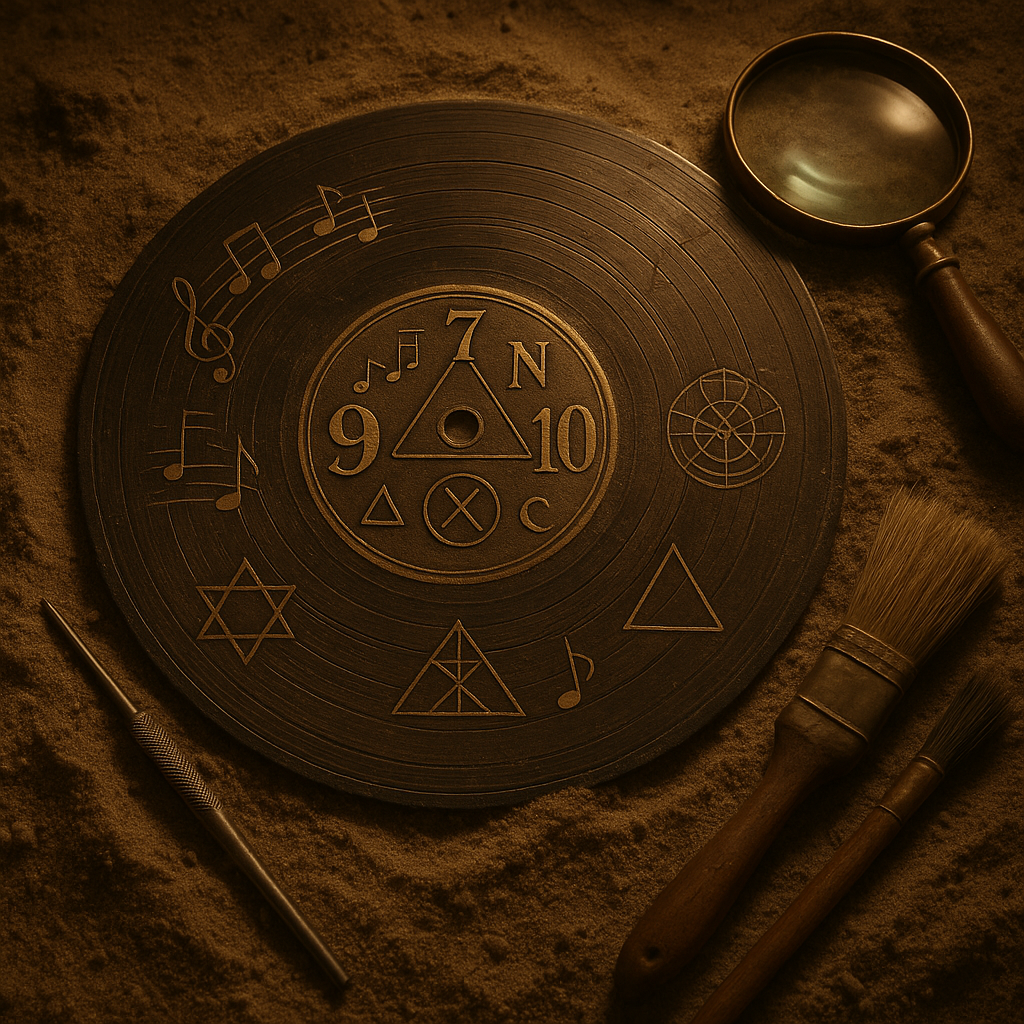The Akashic Records of Hip-Hop: Memory, Trauma, and Collective Consciousness
Not all memories are recorded. Some are inherited.
The sampler is a time machine disguised as studio equipment. Furthermore, every break beat pulled from a dusty record carries more than rhythm. Instead, it carries the encoded pain and power of generations who bled these songs into existence. When producers dig through crates, they’re not just hunting sounds. Rather, they’re archaeologists of consciousness, accessing what Steiner called the Akashic Records through vinyl grooves and analog memory.
This isn’t about musical archaeology. Instead, this is about how hip-hop collective consciousness functions as a living library of ancestral trauma, resistance strategies, and spiritual survival techniques. These techniques pass down through beats, rhymes, and samples.
Sampling as Spiritual Retrieval: The Producer as Medium
When The Bomb Squad crafted the sonic chaos of Public Enemy’s “Fight the Power,” they weren’t just layering samples. Instead, they were channeling ancestral memory through James Brown screams, Malcolm X speeches, and jazz fragments. These fragments carried the DNA of struggle. As a result, each sample became a portal to access collective pain and transform it into revolutionary fuel.
This process mirrors what Rudolf Steiner described as Akashic Record retrieval. In other words, the ability to access cosmic memory through disciplined spiritual practice. However, hip-hop producers developed their own method: crate digging as meditation, sampling as séance, and beat-making as communion with the dead.
Kendrick Lamar proves this isn’t coincidence. His verse on Big Sean’s “Control” encodes his birth year (1987) through numerological patterns. These patterns would make Five-Percenters nod in recognition. Nine plus ten equals nineteen. Then, nineteen plus eighty-seven equals one hundred and six. As a result, the math becomes mantra. Personal history transforms into universal frequency.
Every great producer knows this secret: the breaks you choose choose you back. For example, J Dilla didn’t just sample; he communed. His beats carry the heartbeat of Detroit’s decay and rebirth. Similarly, Madlib doesn’t just flip records; he channels the grief and joy trapped in forgotten wax. Therefore, the sampler becomes a medium for accessing rap cultural memory that stretches beyond individual experience.
Lyrical Archives of Struggle: MCs as Griots

Tupac’s “Changes” functions as more than social commentary. Instead, it’s a generational memory bank preserving the coded strategies that Black communities developed to survive systematic oppression. When he raps about seeing the cemetery full of his homies, he’s not just documenting statistics. Rather, he’s creating a sonic monument to lives the system erased. This ensures their memory survives in the frequencies that matter.
Similarly, Nas elevated this practice to high art on “I Can.” Each verse plants seeds of knowledge that root themselves in young minds. As a result, they create neural pathways for resistance that bypass official education. Therefore, the track becomes a curriculum for self-love disguised as radio-friendly content. Intelligence smuggled through rhythm.
This mirrors the African griot tradition. In that tradition, storytellers served as living libraries preserving tribal knowledge through oral transmission. Hip-hop MCs inherited this responsibility. However, they adapted the method for urban environments where official history either ignored or distorted their reality.
Similarly, this connects to how Wu-Tang’s spiritual philosophy bridges ancient wisdom with street consciousness. The same principles that drive esoteric knowledge preservation flow through hip-hop’s cultural memory systems.
The trauma gets archived too. For instance, when Biggie chronicles his suicidal thoughts on “Suicidal Thoughts,” he’s not just confessing personal pain. Instead, he’s documenting the psychological warfare that poverty wages on consciousness. As a result, he creates a sonic record of damage that therapists and social workers can study decades later.
The Cipher as Akashic Portal

Every cipher functions as a temporary portal where individual memory merges into collective knowledge. When MCs freestyle, they’re not just improvising lyrics. They’re channeling the accumulated wisdom and pain of everyone who stood in that circle before them. The beat becomes the medium, the rhymes become the message, and the gathering becomes a ritual for accessing ancestral flow.
This explains why certain ciphers produce transcendent moments that participants remember for decades. The conditions align, individual egos dissolve, and something larger speaks through multiple voices. Participants often describe feeling “possessed” or “channeled,” experiencing knowledge flowing through them rather than from them.
The best freestyle battles capture this phenomenon. When rappers truly enter the zone, they access information about their opponents that they couldn’t have known consciously. Personal details, family history, hidden insecurities surface in real-time as if the cipher itself reveals what needs to be spoken.
Underground scenes understand this power. Detroit’s competitive freestyle culture produces MCs who can read souls through rhythm. Chicago’s drill scene channels collective trauma into beats that document neighborhood pain with surgical precision. Atlanta’s trap music preserves the hustle strategies that kept communities alive through economic abandonment.
Beat Archaeology: Digging Through Collective Unconscious

Every sample carries the psychic residue of its original context. When producers chop soul records from the seventies, they’re not just borrowing melodies. They’re accessing the emotional frequency of artists who poured their hearts into those recordings during America’s most turbulent decade.
9th Wonder demonstrates this mastery throughout his catalog. His beat for Murs’ “Remember 2Pac” doesn’t just reference Tupac lyrically. The sample choice creates an emotional bridge that allows listeners to feel the same inspiration that Pac channeled. The production becomes a time machine that transports consciousness across decades.
This explains why certain sample flips trigger instant emotional responses in listeners who never heard the original records. The feelings transfer through frequency, bypassing intellectual processing to hit the nervous system directly. Ancestral memory activated through rhythm.
Madlib’s work with Freddie Gibbs proves this principle operates across cultural boundaries. When he flips obscure international records for “Bandana,” he’s not just creating exotic textures. He’s demonstrating that consciousness archaeology works in any language, that human pain and joy translate through rhythm regardless of geography.
The Digital Akasha: Streaming as Collective Memory
Modern hip-hop’s relationship with collective memory shifted when streaming platforms became the primary distribution method. Playlists function as curated memory banks where algorithms mix personal taste with collective listening patterns. Your “Discover Weekly” becomes a portal where individual preference meets mass consciousness.
This creates new possibilities for accessing ancestral frequency. Spotify’s algorithm might place a 1970s soul sample next to its 2020s hip-hop flip, allowing listeners to experience the full memory chain in real-time. The original pain, the transformation process, and the contemporary expression flow together in seamless sequence.
Young listeners discover their musical DNA through these connections. A teenager vibing to Tyler, The Creator might get led back to Stevie Wonder, then forward to Frank Ocean, creating a circular journey through Black musical consciousness that spans generations.
The danger emerges when corporate curation replaces organic discovery. When streaming algorithms prioritize engagement over cultural memory, they can break the transmission chains that connect communities to their acoustic ancestry. The archive becomes corrupted by profit motives rather than preserved through love.
Conclusion: The Infinite Playlist
Hip-hop functions as humanity’s most democratic Akashic Record system. No initiation required, no secret societies gatekeeping access. The archives exist in every smartphone, every pair of headphones, every basement studio where kids learn to transform pain into power.
The tradition continues through new vessels. Kendrick channels Tupac who channeled Malcolm who channeled Marcus Garvey in an unbroken chain of consciousness that adapts its medium while preserving its message. Each generation discovers its own method for accessing the frequency, but the current remains constant.
This is why hip-hop’s influence spreads beyond music into fashion, language, politics, and spirituality. It’s not just cultural export. It’s consciousness technology disguised as entertainment, providing access codes for transformation that work regardless of background.
The samples remember what the samplers forgot. The breaks know where the broken can be healed.
Every beat carries a blueprint. Every rhyme preserves a recipe for surviving the impossible. The Akashic Records of hip-hop keep expanding, ensuring that future generations inherit not just the trauma, but the tools for transmuting it into wisdom.
The archive is alive. The frequency is eternal. The memory survives in every headnod, every cipher, every moment when rhythm reminds us who we really are beneath what the world taught us to become.